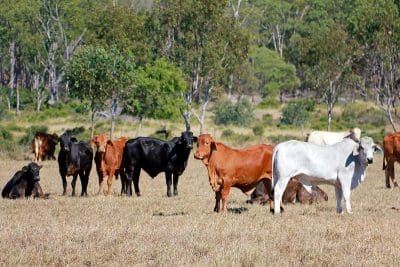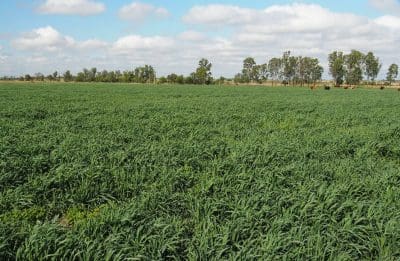
Karamarra supports a beef-cattle operation serviced by a laneway system, steel yards and developed pastures. Photo: Ray White Rural
STRONG cattle prices, low interest rates and wide planting windows are putting some heat into the Central Queensland (CQ) market for well-presented and improved rural properties.
Agents report buying interest is coming from family operations wishing to expand, as well as farmers or beef producers from elsewhere wishing to relocate, or add to their portfolios.
They include Brent Smoothy, who last month purchased Karamarra at Dingo to add to his portfolio which includes cropping and cattle country as well as resources investments in his home state of Western Australia.
Ray White Rural Rockhampton principal Richard Brosnan said Karamarra sold prior to auction for an undisclosed price to Mr Smoothy, who has been looking to invest in CQ over the past year or two.
Mr Brosnan said the price for Karamarra included machinery and no cattle.
The market is reporting the price for the 7230-hectare property to be above $25 million, in line with recent CQ sales.
“There’s a lot of inquiry for CQ places from within the region, and we are now getting outside inquiry too.”
“In CQ, you have a lot of families looking to expand with their kids coming home to the farm after they’ve been off doing other things for a few years, and there aren’t a lot of properties coming on to the market.”
Managing drought
CQ’s major cropping regions are situated in the Central Highlands, Banana and Isaac local government areas.
Central Highlands and Banana are fully drought-declared, a result of them receiving consecutive periods of below-average rainfall, while Isaac is partially drought-declared.
Most farmers in all three areas have managed to harvest profitable cotton and/or sorghum crops this year, and chickpea, wheat and hay crops over winter.
The same cannot be said for many farms in inland southern Queensland and northern New South Wales, which is universally drought-declared, and landholders from these areas are among those looking in CQ.
As the summer-cropping window opens in Queensland and northern NSW, CQ is again looking like the front runner, and is well advanced in its cotton planting.
This can take place from September to January, compared with regions in NSW and southern Queensland, where it is mostly confined to October and November.
CQ can also plant sorghum into autumn, and can plant and harvest winter crops ahead of areas to its south.
The agronomic flexibility can yield a price advantage by offering CQ tonnage to the market prior to large volumes weighing on values as harvest rolls south.
A variation of soil types, and reliable irrigation supplies, also make CQ a flexible and reliable cattle-producing region with renowned fattening and breeding capabilities.
“Because of the options you have with the seasons, Central Queensland seems to be attracting a lot of attention.”
Local confidence
Elders Rural Rockhampton-based agent Virgil Kenny has just sold Overview, a 2033ha mixed farming property at Theodore, to local parties for an undisclosed sum.

Overview at Theodore has sold privately to local interests. Photo: Elders Real Estate
“Given the seasonal conditions being experienced, we’re getting inquiry from NSW, as far north in Queensland as Georgetown, and even into the NT, as well as local interest,” Mr Kenny said.
“Anyone who has been affected by this continued dry is looking further afield to move stock and produce and store feed, so we’re drawing buying interest from a lot of different areas.”
Mr Kenny said strong prices for commodities produced in CQ, as well as its ability to get rain, had added to the region’s appeal for expanding and new-to-the-district landholders, and this was translating to a rise in rural land values.
“We experienced a price hike from 2004-2008, and a lot of it was brought on by access to finance.”
Mr Kenny said the escalation came to a screaming halt with the Global Financial Crisis, when money became very difficult to borrow, and the market did not come back to life until 2011.
“We’ve seen surges in the market in the past two years, and the past eight months in particular have shown an increase in land prices.
“Low interest rates are certainly helping people who are after good cattle and farming country.”
Recent rise
Mr Kenny said developed CQ scrub country with improved pastures was generally selling for $2470-$4320/ha, with the odd sale above that.
Most cropping country has been trading in the $3700-$4940/ha range.
“Those prices are up an easy 10 per cent on where they were two years ago.”
Mr Kenny said CQ has traditionally been held by family farming operations.
“Some investors are just starting to show their nose, supported by superannuation funds.”
Rural Funds Group and Canadian-backed joint venture Hewitt Cattle Company, along with longstanding investor AACo, which owns and operates CQ’s biggest feedlot, are among them.
“Right now, people are chasing quality and scale, and sometimes the lesser properties don’t have the ability to sustain a herd in the way the potential buyer wants.”

HAVE YOUR SAY